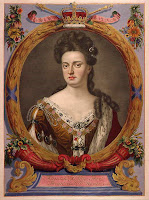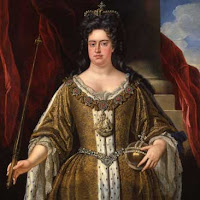
The Riskies are happy to welcome Cara Elliott (aka Andrea Pickens) to the blog to talk about her “debut” series! Comment for a chance to win a copy of To Sin With a Scoundrel…
An enjoyable romance peopled with charming characters that demonstrate her strong storytelling gift! –RT Book Reviews
Riskies: Welcome back, Andrea! Tell us about To Sin With a Scoundrel and your new series as Cara Elliott!
 Cara: The Circle of Sin trilogy, which marks my debut as Cara Elliott, centers around a small group of female scholars who meet each week to share their knowledge–and their friendship. The 3 heroines of the trilogy, Ciara, Alessandra, and Kate, are beautiful and brainy. And they each have a scandalous secret…
Cara: The Circle of Sin trilogy, which marks my debut as Cara Elliott, centers around a small group of female scholars who meet each week to share their knowledge–and their friendship. The 3 heroines of the trilogy, Ciara, Alessandra, and Kate, are beautiful and brainy. And they each have a scandalous secret…
The 3 stories are all about past deceptions, dark secrets, and hidden passions. Each of the heroines must draw on her own cleverness and courage–as well as help from a sinfully sexy rogue–when a past sin stirs up a mix of deadly intrigue and dangerous desires.
To Sin With a Scoundrel, the first book in the series, features Lady Ciara Sheffield, a reclusive widow. Because of her expertise in chemistry, she’s been shadowed by rumors that she poisoned her late husband. When his relatives try to gain custody of her young son and his inheritance, her friends decide she needs a rich and influential fiance to help quell any scandal. The rakish Earl of Hadley doesn’t seem to be an ideal choice. A fun-loving, hell-raising devil he is her exact opposite–but in science there’s the old adage “opposites attract”…
Riskies: What was the inspiration for the stories, and what kind of research did you do? Did you base your scientific circle on real women of the Regency era?
Cara: The inspiration for the series came a few years ago when I saw a couple of exhbits on women of the Romantic era. They showcased a wonderful array of real-life females, from scientists and writers to artists and explorers. Their stories and accomplishments were truly amazing, and it brought home to me how much courage and conviction these women had to dare to defy the conventions of their time in order to pursue their passions.
 For example, there was Mary Shelley, who eloped to Europe at 16 with married poet Percy Shelley–and then went on to become a famous writer of her own. And then there was Augusta Ada Byron, Countess Lovelace, daughter of Byron, who was a mathematical genius. She survived an abusive childhood and went on to work with Charles Babbage, helping to develop the precursor to the modern computer.
For example, there was Mary Shelley, who eloped to Europe at 16 with married poet Percy Shelley–and then went on to become a famous writer of her own. And then there was Augusta Ada Byron, Countess Lovelace, daughter of Byron, who was a mathematical genius. She survived an abusive childhood and went on to work with Charles Babbage, helping to develop the precursor to the modern computer.
So I knew right then that I wanted to write a series that celebrated the spirit of these smart, brave women.
But even though my heroines are smart, they don’t live in an ivory tower! There are some pretty steamy scenes in Scoundrel, but they certainly weren’t difficult to write. I just call in Johnny Depp or Orlando Bloom for a little rehearsal, and then it’s no problem at all! (Sometimes I have to settle for Daniel Craig, but what’s a girl to do?)
Riskies: What is “risky” about the book?
Cara: Well, I tend to write offbeat, unconventional heroines, maybe because I tended to be a tomboy as a child and was often chided to “act more like a normal young lady!” (To her credit, my mother was not one of those voices. She always encouraged my enthusiasms, whether they involved cutting out cardboard swords and crowns, or making bows and arrows, for which I am profoundly grateful). In any case, none of my heroines are demure, dainty demoiselles swathed in layers of satin and silk. They’re more the sort of women who don’t mind rolling up their sleeves and getting their hands dirty, both physically and metaphorically. I enjoy creating characters who are both strong and vulnerable. To me, that dichotomy adds depth and texture to a story.
Riskies: When did you know you wanted to be a writer?
Cara: Oh, I always had stories bubbling around in my brain! I wrote my first book at age 5, a cowboy story with brightly colored drawings of horses and gunslingers. (Since I now write Regencies, I must have a thing for Men In Boots!). My other childhood memory of storytelling was a 5th grade English class. I had a wonderful teacher who gave us really interesting projects. One day he walked in with a sheaf of pictures cut out of magazines, and handed one to each of us. The assignment was to spend the next half-hour writing a short story based on the picture. Then we all had to show our picture and read our stories aloud. After class, as we were filing out to math or some other odious subject, he took me aside and said that he had been sitting in the back of the room, half listening to everyone as he corrected papers, but when I started to read he put his pen down. “You have a real talent for this,” he said with a pat on my shoulder.
So I’ve always had a vivid imagination…so much so that I think at times it worried my parents that I was so happy in my own little world, drawing, reading, playing with toy soldiers. My teachers would tell you that I was the class history geek, even in grade school. In high school, my interest in art sort of took over and steered me away from writing. I remained a voracious reader, and as a history minor in college I wrote reams of non-fiction essays, but storytelling got put on the back burner.
Then about 12 years ago the Muse started whispering in my ear again. I sharpened my pencil and opened a blank notebook–and despite the craziness of the publishing world I can’t imagine my life without writing!
Riskies: What’s next for you?
 Cara: I’m working on a new trilogy for Grand Central, and I also have some historical mystery ideas taking shape….
Cara: I’m working on a new trilogy for Grand Central, and I also have some historical mystery ideas taking shape….
And in June look for the second “Circle of Sin Book” To Surrender to a Rogue!
Riskies: You’re currently teaching a seminar on Regency romance at Yale! What’s that been like? What’s the reaction of your students to romance fiction? Has it had an effect on your own writing?
Cara: Teaching the seminar with Lauren Willig has been an amazing experience! Our students come to class each wekk with such interesting reactions to the book assignments. Their comments have been fresh, witty, unexpected, amusing, and it’s made me look at my own views from a whole new perspective. The dialogue and debate are exciting and inspiring.
We’ve been tracing the development of the Regency romance from Austen to the modern American practicioners, and we talk about such things as what makes a compelling hero and heroine, as well as plot tropes and the nature of love and romance. So in drafting the lesson plans for each week I’ve had to read (or re-read) the books not just for enjoyment but with a critical eye, looking at language, structure and characterization. I’ve learned a lot about writing, and I hope the students have too. I’ve really enjoyed every minute–but I have to say, I had forgotten how much work school is!
For more information on Cara’s books, and the syllabus and reading list of the class, you can visit her website! Comment for a chance to win a copy of To Sin With a Scoundrel
 March kicks off a very exciting (and busy!) spring for me with the release of 2 stories! One is Scandalous Brides, a re-release of two of my Signet Regencies (my first two books, Scandal in Venice and The Spanish Bride), with a beautiful new cover! And the other is a Harlequin Historical Undone short story, To Bed a Libertine, which launches my “Muses of Mayfair” series in the US (To Catch a Rogue, April 2010; To Deceive a Duke, May; To Kiss a Count, June).
March kicks off a very exciting (and busy!) spring for me with the release of 2 stories! One is Scandalous Brides, a re-release of two of my Signet Regencies (my first two books, Scandal in Venice and The Spanish Bride), with a beautiful new cover! And the other is a Harlequin Historical Undone short story, To Bed a Libertine, which launches my “Muses of Mayfair” series in the US (To Catch a Rogue, April 2010; To Deceive a Duke, May; To Kiss a Count, June). Although in some traditions there are only 3 or 4 Muses, in traditional stories of Hellenistic times there are 9. Calliope (chief of the Muses and in charge of epic poetry); Euterpe (lyric song); Clio (history); Erato (poetic poetry); Melpomene (tragedy); Polyhymnia (sacred song); Terpsichore (dance); Thalia (comedy/bucolic poetry); and Urania (astronomy). In ancient Greece they were usually evoked at the beginning of a poem or song, asking for their help or giving them credit. (Maybe I should try that sometime…) Even later poets utilized this tradition, such as Dante (“O Muses, o high genius, aid me now!”) and Shakespeare (“O for a Muse of fire, that would ascend the brightest heaven of invention”).
Although in some traditions there are only 3 or 4 Muses, in traditional stories of Hellenistic times there are 9. Calliope (chief of the Muses and in charge of epic poetry); Euterpe (lyric song); Clio (history); Erato (poetic poetry); Melpomene (tragedy); Polyhymnia (sacred song); Terpsichore (dance); Thalia (comedy/bucolic poetry); and Urania (astronomy). In ancient Greece they were usually evoked at the beginning of a poem or song, asking for their help or giving them credit. (Maybe I should try that sometime…) Even later poets utilized this tradition, such as Dante (“O Muses, o high genius, aid me now!”) and Shakespeare (“O for a Muse of fire, that would ascend the brightest heaven of invention”). In my “Muses of Mayfair” trilogy, the 3 Chase sisters (Calliope, Clio, and Thalia) are mortal women of the Regency era with the misfortune of having classical scholars for parents who saddle them with these names (though they each have elements of their namesakes!). In To Bed a Libertine we meet a real Muse, Erato, Muse of erotic poetry. She and her sisters have taken on the Chase heroines as a special project since their births, and when she checks in on them in her magic reflecting pool on Mount Olympus she sees Calliope is in danger of losing her true love Lord Westwood.
In my “Muses of Mayfair” trilogy, the 3 Chase sisters (Calliope, Clio, and Thalia) are mortal women of the Regency era with the misfortune of having classical scholars for parents who saddle them with these names (though they each have elements of their namesakes!). In To Bed a Libertine we meet a real Muse, Erato, Muse of erotic poetry. She and her sisters have taken on the Chase heroines as a special project since their births, and when she checks in on them in her magic reflecting pool on Mount Olympus she sees Calliope is in danger of losing her true love Lord Westwood.








